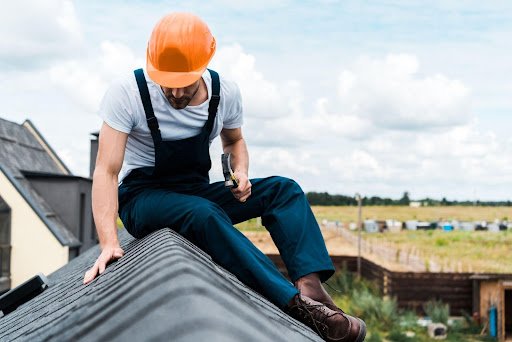Welcome to the ultimate guide for fixing your roof! If you’re reading this, it’s likely that you’re either facing a roofing problem, or you’re just a DIY enthusiast looking to improve your home repair skills. Either way, you’re in the right place!
Roof repair can seem intimidating, but with the right tips and tricks, you’ll be able to tackle any issue like a pro. From minor leaks to major structural damage, we’ll cover it all. You’ll learn how to identify the problem, choose the right materials, and follow the steps to fix your roof safely and efficiently.
So grab your hard hat and tool belt, and let’s get started on transforming your roof from a problem to a point of pride. With our guidance, you’ll be able to protect your home from the elements and impress your neighbours with your newfound skills. Let’s get roofin’!
15 Tips to Fix Your Roof
1. Conduct a Roof Inspection
Before you start fixing your roof, it’s essential to conduct a thorough roof inspection. This includes checking for any leaks, missing shingles, or other damages that may require repair.
2. Safety First
Safety should always be your top priority when fixing your roof. Make sure to wear the right protective gear, such as gloves, hard hats, and safety glasses, to prevent any injuries.
3. Choose the Right Materials
Selecting the right materials is crucial when fixing your roof. Be sure to choose high-quality materials that are durable and can withstand the weather conditions in your area.
4. Use Proper Tools
Using the right tools is just as important as using the right materials. Make sure you have all the necessary tools for the job, such as a ladder, roofing nails, and a hammer.
5. Replace Damaged Shingles
If you notice any damaged or missing shingles, replace them immediately. Leaving them can lead to water leaks and further damage to your roof.
6. Use Proper Sealant
If you find any leaks in your roof, use a roofing sealant to prevent water from entering your home. It’s essential to fix leaks as soon as possible to prevent further damage. When sealing joints or repairing leaks, be sure to use the proper sealant for the job. Using the wrong sealant can lead to further damage.
7. Clean Gutters
Regularly cleaning your gutters is one of the most important steps you can take when it comes to fixing your roof. Clogged gutters can cause water to back up and leak into your home, leading to major damage. This can be especially problematic in areas with heavy rainfall or snowfall.
8. Install a Drip Edge
Drip edges are essential for roof maintenance. It is a thin strip of metal, usually made from aluminium or galvanised steel, which is installed along the edges of your roof in order to prevent water from entering the home.
9. Reinforce Structural Integrity
If your roof is starting to show signs of wear and tear, it’s important to reinforce its structural integrity before fixing other issues. This can be done by adding extra support beams or plywood sheathing for added stability.
10. Repair Flashing
Flashings act as barriers between two different surfaces to keep moisture out and prevent leaks. When installing flashing, make sure to use high-quality materials that are designed to withstand extreme weather conditions.
11. Fix Chimney Issues
If your chimney is causing issues with your roof, it’s essential to address them immediately. Fixing any problems with your chimney can prevent water from entering your home.
12. Check for Mould and Mildew
Mould and mildew can be a sign of serious water damage to your roof. They can cause major structural damage as well as health risks if left unchecked.
The presence of mould or mildew on your roof is an indication of prolonged exposure to moisture and can lead to the breakdown of shingles, the rotting of wooden components, and the growth of other harmful organisms.
13. Insulate Your Attic
Insulating your attic can help keep the temperature in your home consistent and prevent moisture from entering through the roof. Properly insulating your attic will also reduce energy costs by preventing heat from escaping through the roof in the winter.
14. Install a Ridge Vent
A ridge vent is an essential element of any roofing system as it helps ensure proper ventilation in your attic. Without adequate ventilation, air can become trapped and cause excessive moisture buildup, which can lead to the breakdown of shingles, wood rot, and other damaging effects.
15. Check for Ice Dams
In colder climates, ice dams can form on your roof, causing water to back up and potentially causing damage. Check for any ice dams and remove them immediately.
By following these 20 amazing tips, you’ll be equipped with the knowledge and skills to tackle any roofing issue. Remember to prioritise safety, choose high-quality materials, and regularly maintain your roof to prevent any potential damage.
As an additional tip, it helps to consult with Brisbane Roof and Paint for professional advice!
